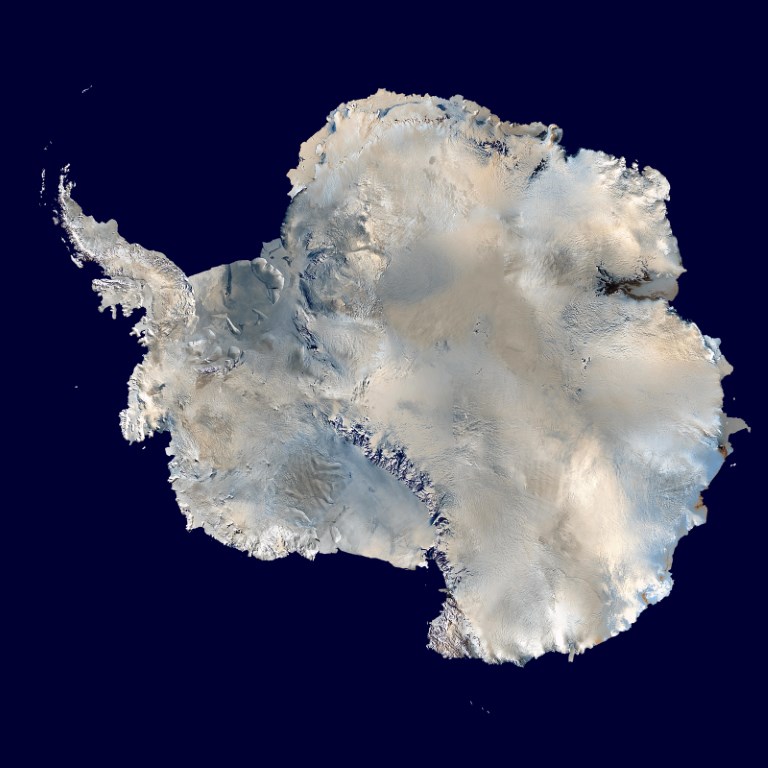The Dome of Argus
May 2, 2019 | Expert Insights

China and America are extending their geopolitical heft to an ice dome in the Antarctic. Why is Dome Argus at the centre of competition between the two countries in the South Pole?
Background
Dome Argus is the highest point on the Antarctic Plateau, believed to be the coldest naturally occurring place on Earth. Dome Argus is located near the centre of the continent, half-way between Lambert Glacier and the geographic South Pole. Dome Argus has the best weather conditions in the Antarctic, with low average wind speeds, a typically unrestricted astronomical view and little precipitation, while sheltered from fluctuating sea-levels 1,200km away. It is however inaccessible by helicopter, cut off by land during winter months and doesn’t contain a wintering base.
The Antarctic Treaty System (ATS) established the continent as a military free zone in 1961 by the territorial claimant states; Argentina, Australia, Chile, France, New Zealand and the UK, along with several non claimant states like USSR and US. ATS introduced the Antarctic Specially Managed Area (ASMA) aimed to assist in the planning and coordination of activities within a specific area to avoid possible conflicts and minimise environmental impacts. China has sought to turn Dome Argus into an ASMA.
Analysis
China has the biggest presence on Dome Argus and was the first nation to reach the remote plain of ice at 4093 meters above sea level, in a land expedition in 2005. Kunlun Station is China's largest base on Dome Argus. Beijing operates a research facility which includes telescope arrays for astronomical observations. Significantly, the site is geared towards monitoring space debris.
China’s ASMA plan for Dome Argus has been met with push-back from the US. Reports suggest that the US has set up its own, temporary base about 100km away from Kunlun Station. Backed by America’s long-standing Antarctic military programme - Operation Deep Freeze - the US base is trying to block China’s ASMA plan. Reports suggest that the American station was established “overnight,” by having personnel and equipment flown in by air. Beijing is likely to view the move as a proem to more American activity.
Dome Argus is strategically located on the continent. Many satellites, including military and communication probes, use a polar orbit to maximise its global coverage, passing directly above Antartica. It has unique advantage in tracking and cleaning space debris.
The US and China are currently pursuing the development of a powerful laser in Antarctica to clean up space debris. China operates at least six telescopes at its Kunlun Station. The cleaning of space debris using earth-based laser platforms necessitates larger telescopes and sophisticated optical systems. However, the Dome’s difficulty of access makes delivering these platforms a logistical challenge, especially given their size and immense energy requirements.
Dome Argus can be of particular use to target military satellites. For example, in war scenarios, critical satellite infrastructure such as America’s Global Positioning Systems (GPS) and China’s Global Navigation Satellite - Beidou (GNS) are crucial to weapon systems and navigation. A laser-based facility on Dome Argus would help negate the positioning capabilities of the enemy, a huge arbitrage in net centric warfare.
Counterpoint
The ATS forbids the commercialisation and militarisation of the continent, as a global commons. Developing a laser system or exploiting mineral resources is a violation of this covenant.
Incidentally, Dome Argus is located within Australia’s claim to the continent. Although some of China’s telescopic components were developed at Australian universities, the two are unlikely to see eye-to-eye given recent tensions. The costs associated with inspecting Antarctic territorial claims is close to half a million dollars per base inspection. Australia’s annual Antarctic budget is about US$200 million. They are currently building a new runway, deploying an icebreaker ship and building more infrastructure. Australia is likely to join US efforts to thwart China’s ASMA campaign, meaning that the competition is three-way.
Assessment
Our assessment is that the posturing between US and China over the Dome is a battle of political will, demonstration of military power and global influence. Although the ATS prevents the militarisation of the Antarctic, the parties are likely to legitimise their actions as a research endeavour aimed at cleaning space debris. We feel that is aligned to President Xi’s China space dream aimed at advancing its strategic interest with space technology. We believe that the development of its space program is linked to its long term plan to utilise space for its vast resource potential. We feel that China’s past behaviour of staking claims to a territory based on “first presence,” as well as historical revisions to include the South China Sea, does not assure that it will follow through on its commitments to recognise other stakes on shared territory.
India Watch
India has two active bases in the Antarctic and one supply depot. India’s bases are focused on oceanographic research, the subcontinents’ geological origins, medical sciences and the exploration of minerals. India is likely to use its bases to build up its cold weather capabilities.








Comments